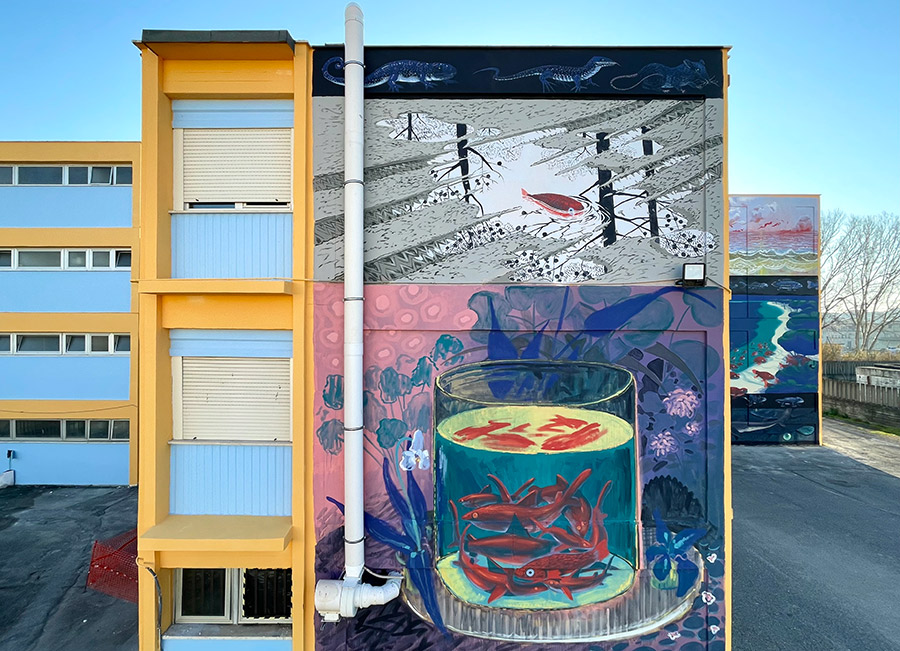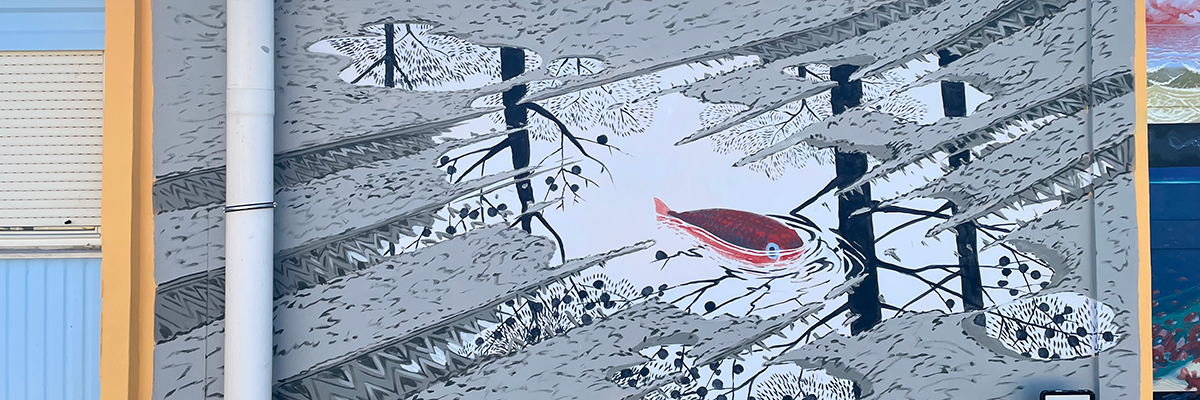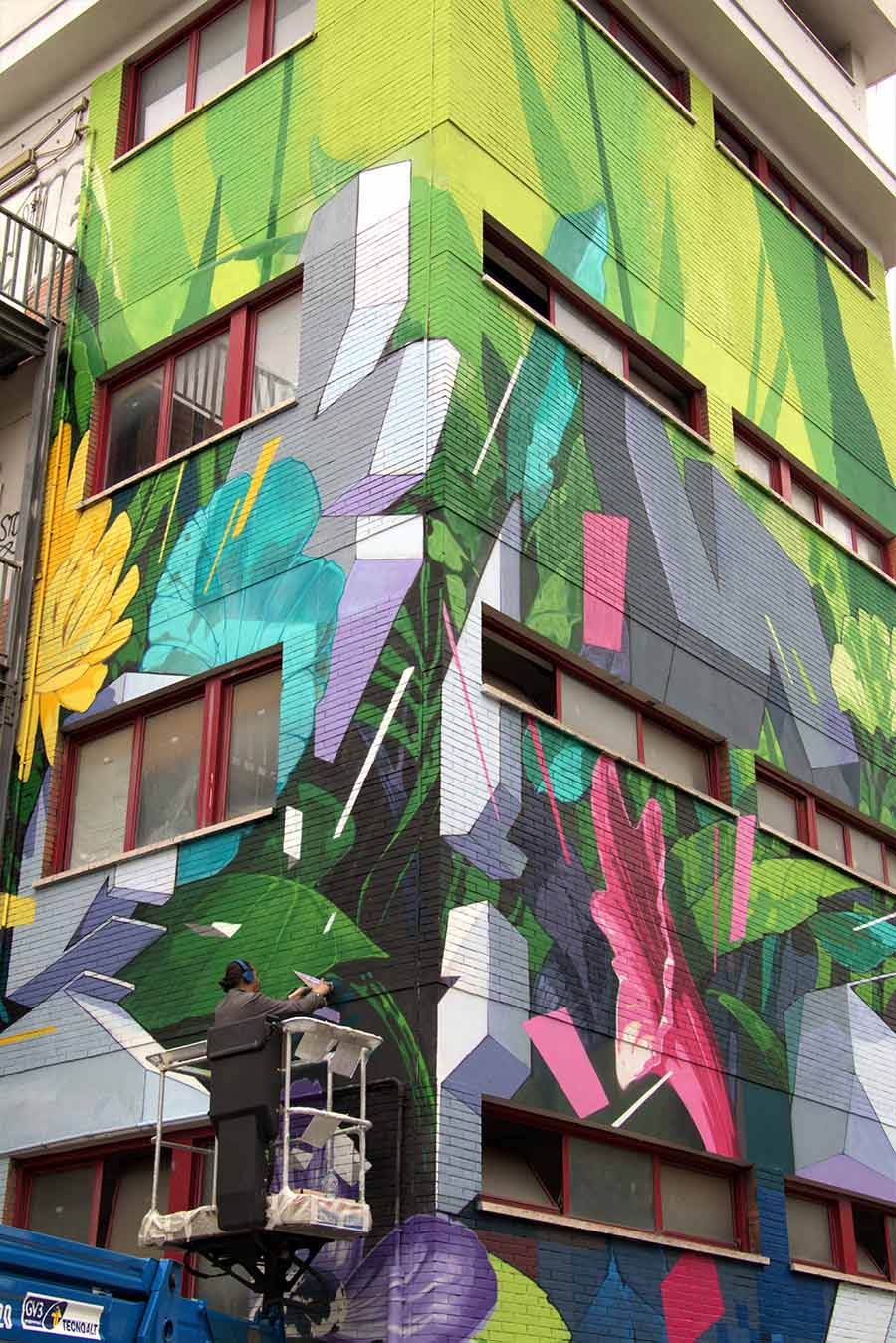Curated by Mirko Pierri of the a.DNA project association
When Evolution Splashes onto School Walls: The E.C.O. Mural Unfolds
Let’s dive into a story where fish climb out of the sea and onto the school walls. Picture this: The Toscanelli Institute in Ostia, Italy, is no longer just a backdrop for mundane school routines. Thanks to the visionary Mirko Pierri of the a.DNA project, this school has turned into an extraordinary canvas that narrates the fascinating tale of evolution, courtesy of the street artist known as Hitnes. This isn’t your everyday science class; this is art making school cool again.

“The Poetry of the Fishes’ Evolution” is a journey from the ocean’s abyss to the land’s expanse, with Hitnes as our guide. His artwork wraps around the school’s walls like storybook pages, where fish transform into mammals right before our eyes. But there’s a twist – this story is a nudge towards thinking about our environmental impact.
Mirko Pierri puts it brilliantly: “These two architectural facades have… intrigued the students’ gaze who experience them. Now they are a source of curiosity… changing the perspective of those who cross this large courtyard.” Perhaps the new work can spark new conversations and encourage young minds to ponder, all while passing to the next class.

The E.C.O. project has turned the school into a buzzing hub that goes beyond textbooks. Hitnes’ work, with its echoes of ancient seas and critiques of human intervention, isn’t just for show. It invites the young (and the young at heart) to reflect, question, and discuss.
Director Paola Toto and the surrounding educational community have welcomed this vibrant addition, turning the Toscanelli Institute into a beacon of learning and environmental awareness. Imagine the usual school bell ringing, but instead of a rush to escape, there’s a buzz of students discussing evolution, art, and the environment. Here, you can trace your fingers over the evolution of life on these walls and think about our place in the world – all before the bell rings for your next class.








 BROOKLYN STREET ART LOVES YOU MORE EVERY DAY
BROOKLYN STREET ART LOVES YOU MORE EVERY DAY





















